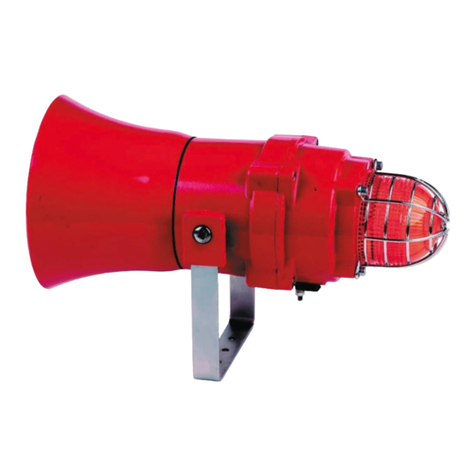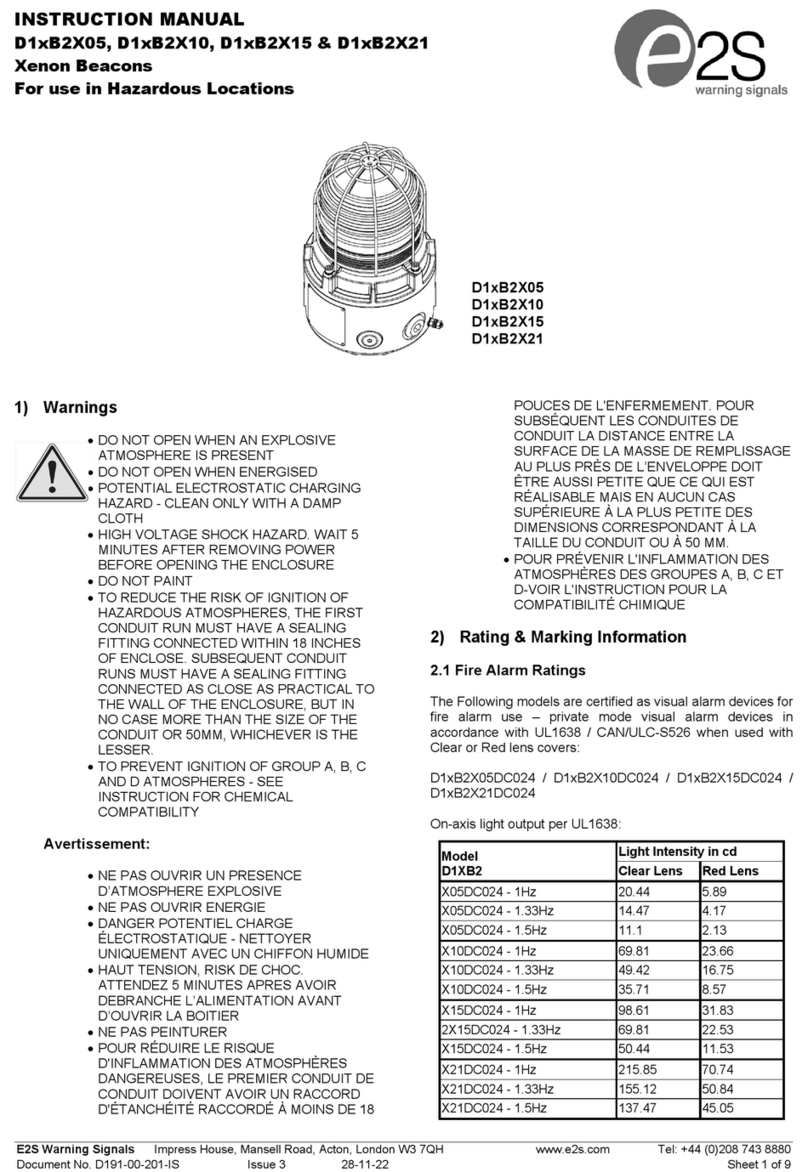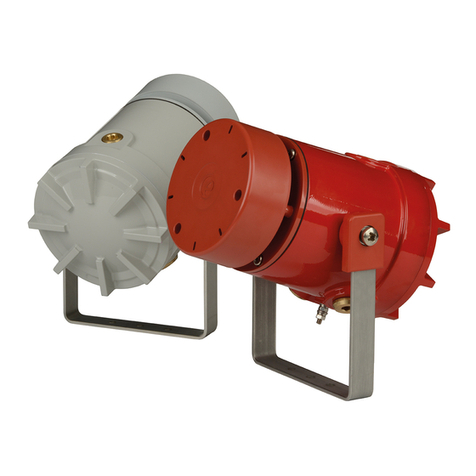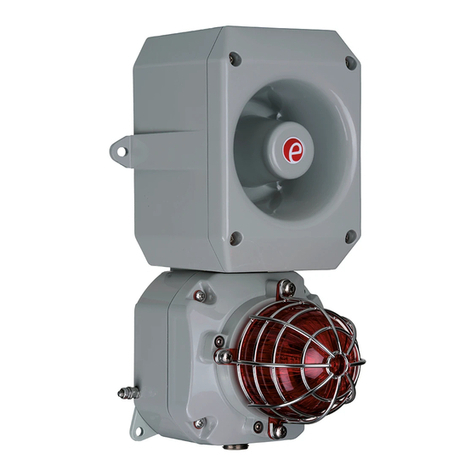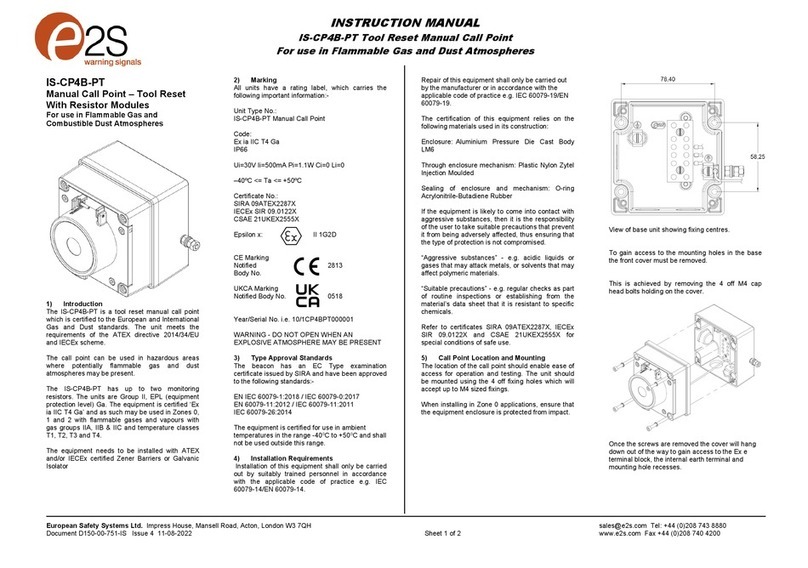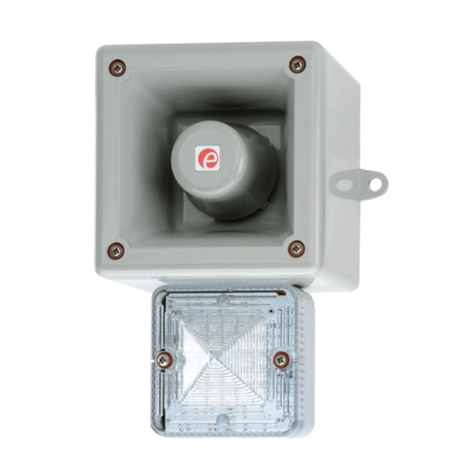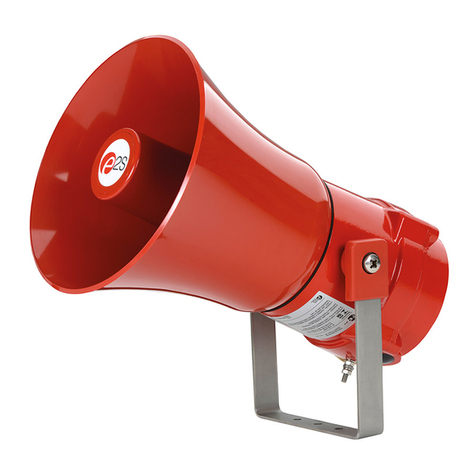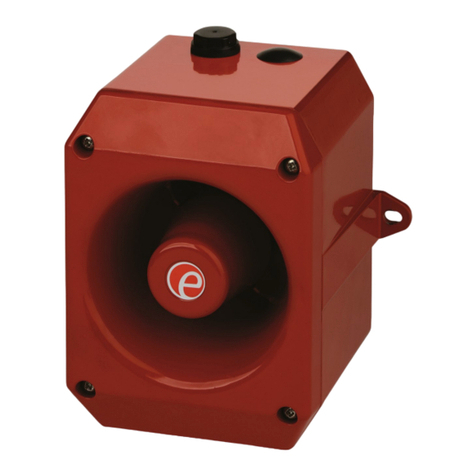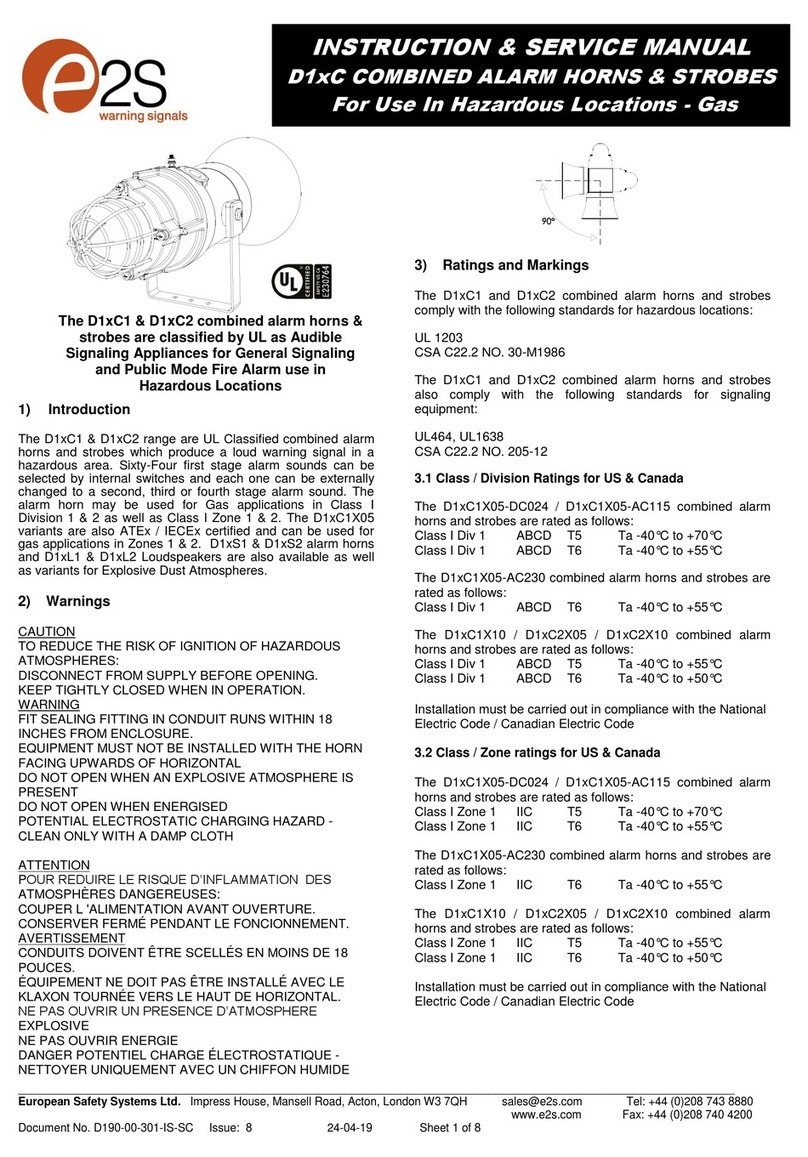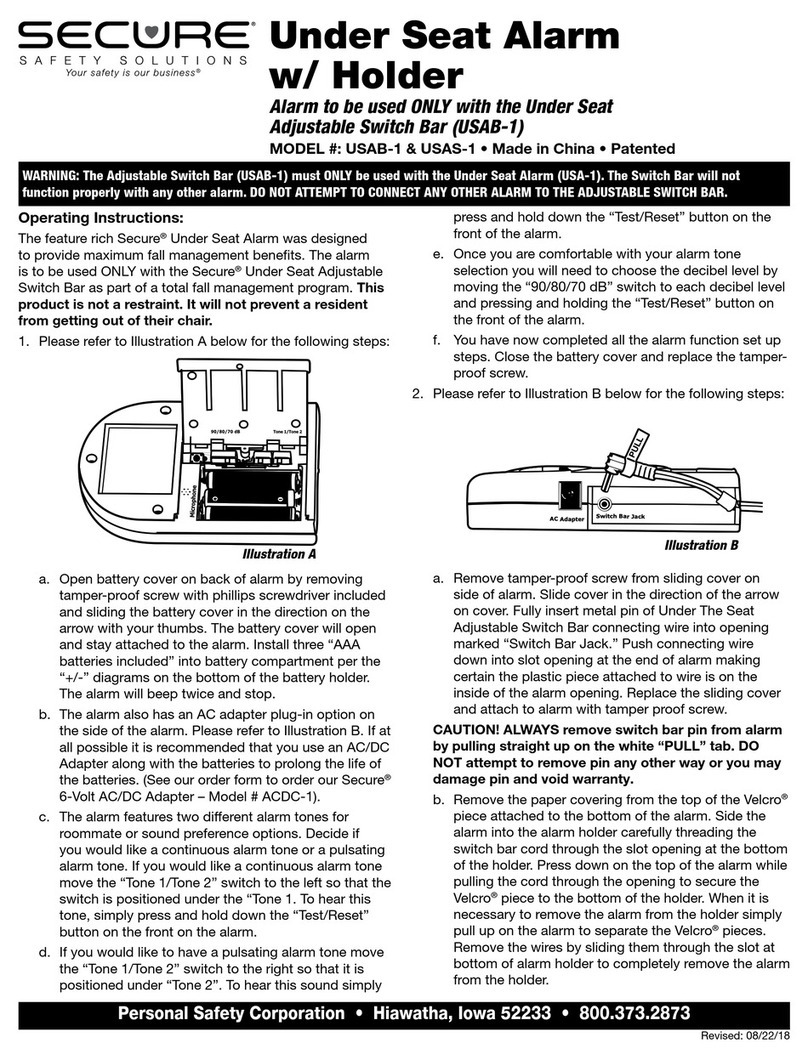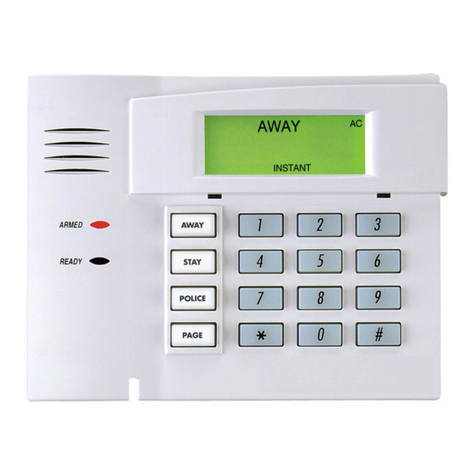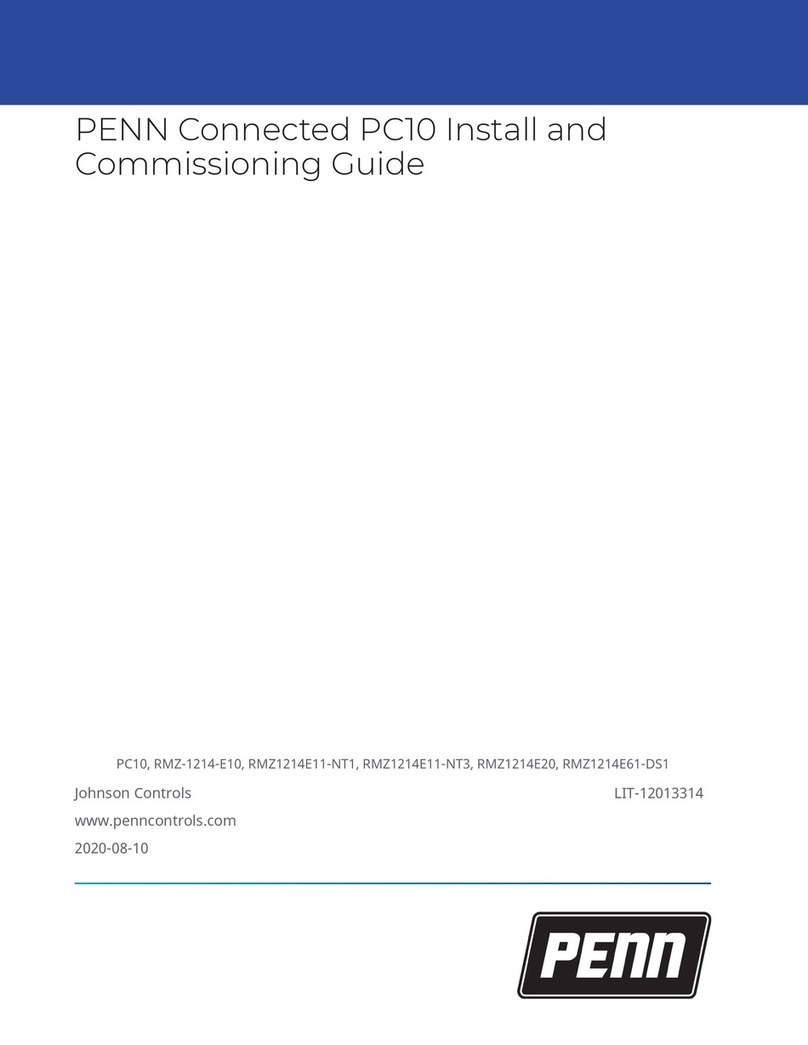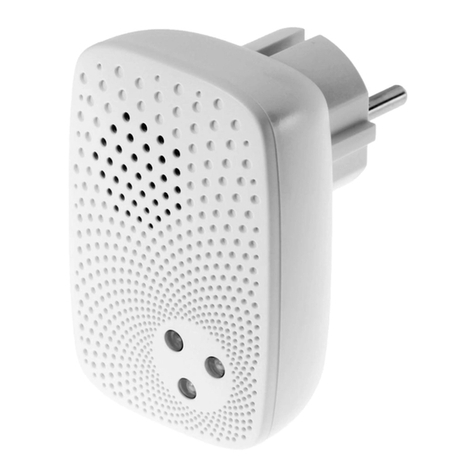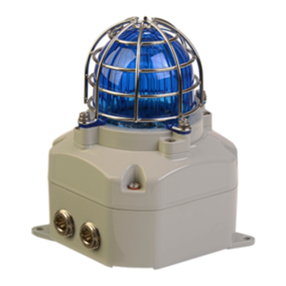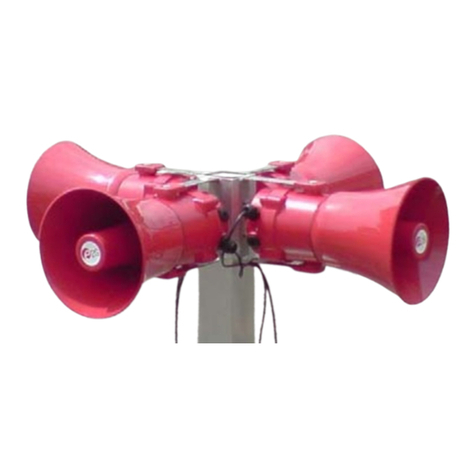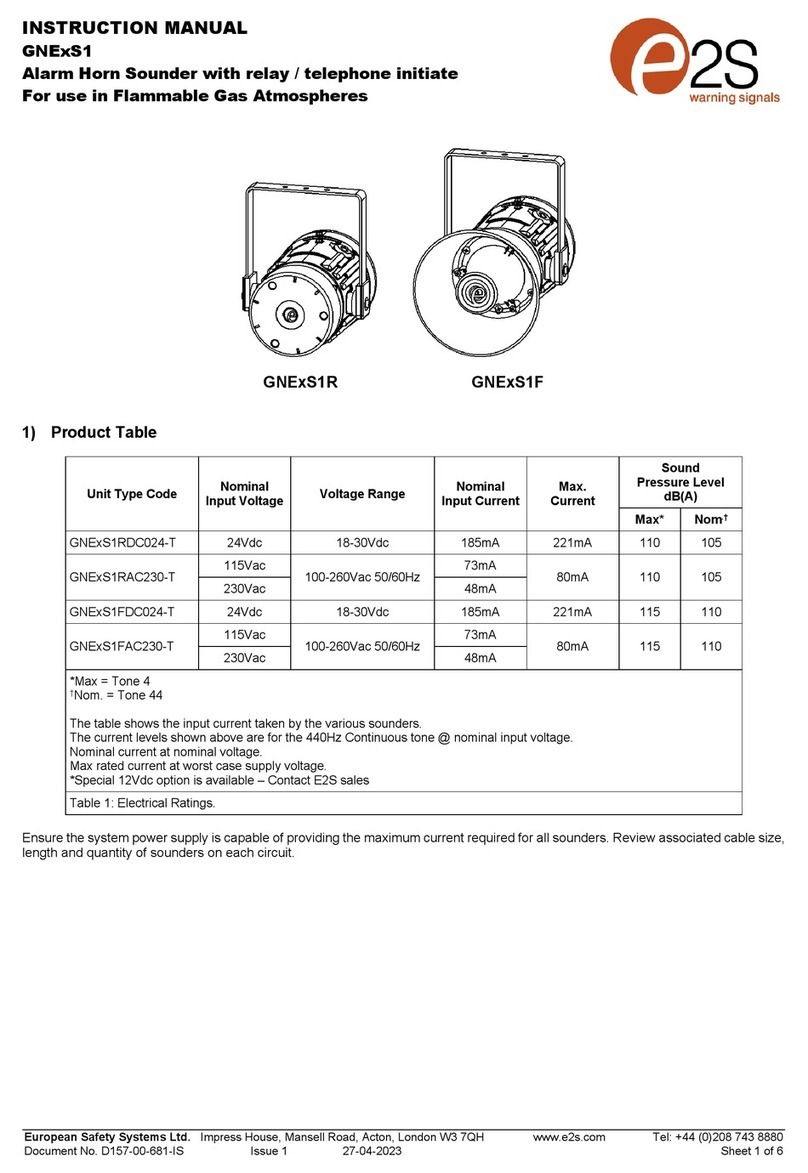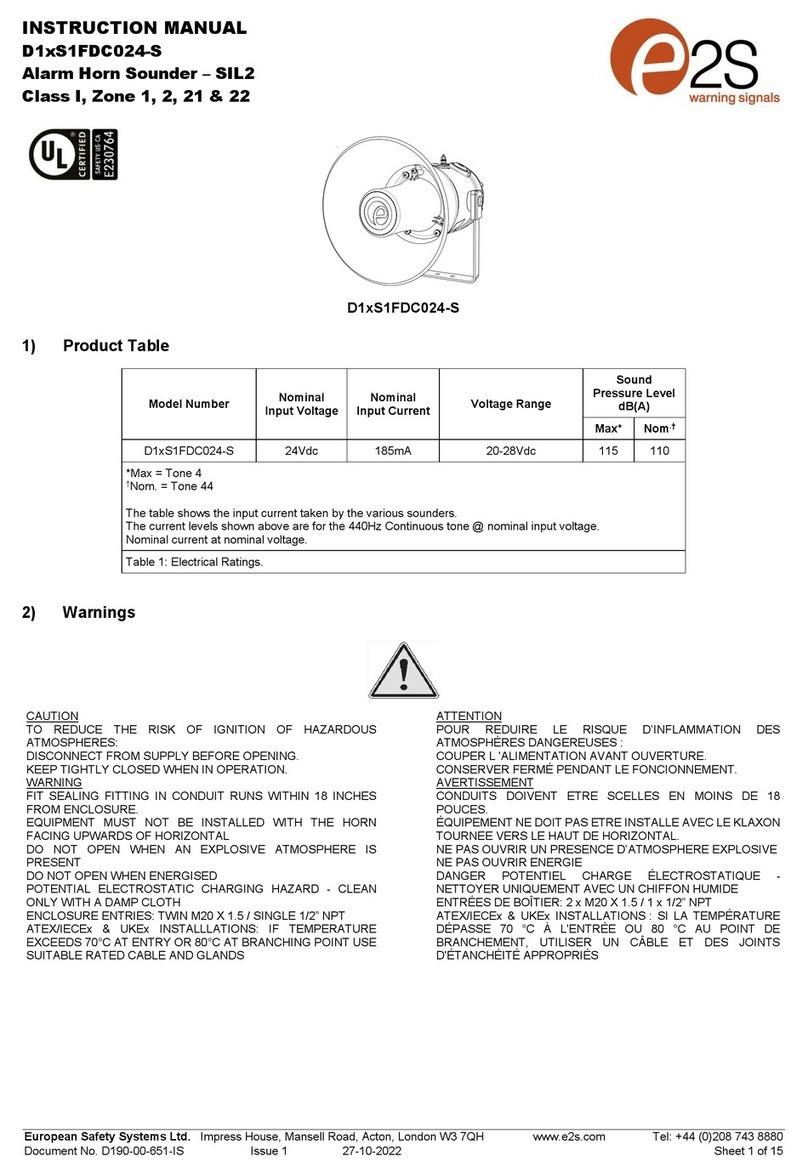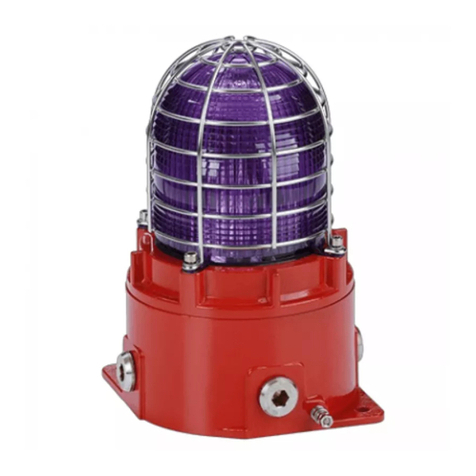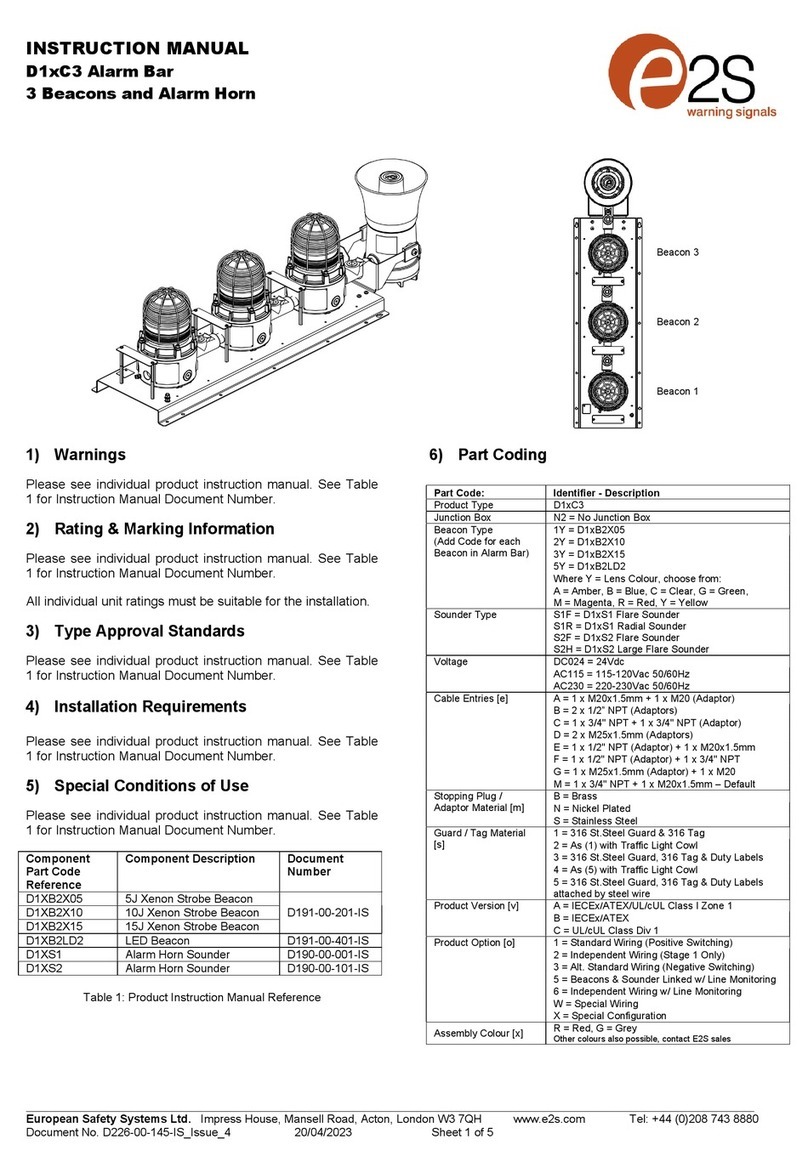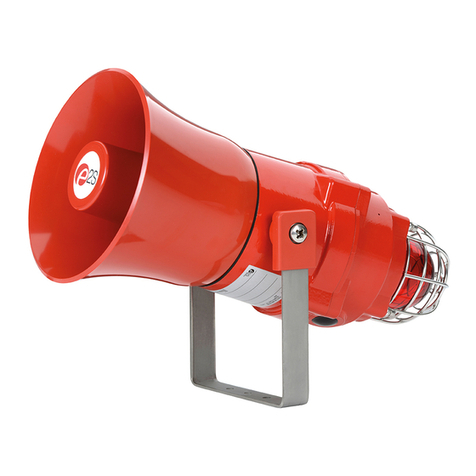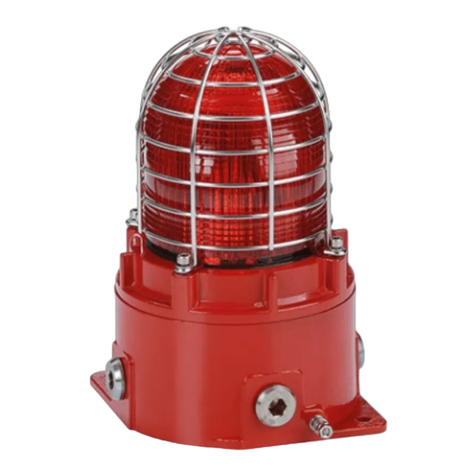
E2S Warning Signals Impress House, Mansell Road, Acton, London W3 7QH
Document No. D199-00-621-IS
6.2. Access to the Flameproof Enclosure
Warning –Hot surfaces. External
surfaces and internal components
may be hot after operation, take
care when handling the equipment.
In order to connect the electrical supply cables to the beacon
it is necessary to remove the flameproof cover to gain access
to the flameproof chamber. To access the Ex d chamber,
loosen the M4 grub screw on the beacon cover. Open the
enclosure by turning the beacon cover counterclockwise and
remove the cover, taking extreme care not to damage the
flameproof threads in the process (See figure 3).
Figure 3: Accessing the Explosion Proof Enclosure.
On completion of the installation, the flameproof threaded joint
should be inspected to ensure that they are clean and that they
have not been damaged during installation.
Repair of the flame path / flameproof joints is not permitted.
Ensure that the ‘O’ ring seal is in place.
When fitting the flameproof cover ensure the thread is
engaged correctly. Fully tighten the cover all the way, ensure
no gap is visible between the cover and base of the beacon
enclosure. Tighten the M4 grub screw.
7) Installation Requirements
7.1. Installation Standards Compliance
Warning –High voltage may be
present, risk of electric shock.
DO NOT open when energised,
disconnect power before opening.
The beacon must only be installed by suitably qualified
personnel in accordance with the latest issues of the relevant
standards.
ATEX / IECEx & UKEx installation standards
EN60079-14 / IEC60079-14: Explosive atmospheres -
Electrical installations design, selection and erection.
EN60079-10-1 / IEC60079-10-1: Explosive atmospheres
- Classification of areas. Explosive gas atmospheres.
EN60079-10-2 / IEC60079-10-2: Explosive atmospheres
- Classification of areas. Explosive dust atmospheres.
The installation of the units must also be in accordance
with any local codes that may apply and should only be
carried out by a competent electrical engineer who has
the necessary training.
NEC / CEC Installation Standards
Cautions
Attention: Installation must be carried out by an
electrician in compliance with the National Electrical
Code, NFPA 70 or CSA 22.1 Canadian Electrical Code,
Part I, Safety Standard for Electrical Installations,
Section 32. / L'installation doit exclusivement être
réalisée par du personnel qualifié, conformément au
code national d'électricité américain, NFPA 70 ou CSA
22.1 Code canadien de l'électricité, première partie,
norme de sécurité relative aux installations électriques,
Section 32.
Attention: Disconnect from power source before
installation or service to prevent electric shock /
Débranchez-le de la source d'alimentation avant
l'installation ou l'entretien pour éviter tout choc
électrique.
The installation of the units must also be in accordance
with any local codes that may apply and should only be
carried out by a competent electrical engineer who has
the necessary training.
7.2. Cable Selection and Connections
When selecting the cable size, consideration must be given to
the input current that each unit draws (see table 1), the number
of beacons on the line and the length of the cable runs. The
cable size selected must have the necessary capacity to
provide the input current to all of the beacons connected to the
line.
Electrical connections are to be made into the terminal blocks
on the PCBA, using solid wire 0.5-4mm2 / AWG 20-12 or
stranded wire, sizes 0.5-2.5mm2 / AWG 24-14. Wire insulation
needs to be stripped 8mm. Wires may be fitted securely with
crimped ferrules.
Figure 4: Wire Preparation.
Terminal screws need to be tightened down with a tightening
torque of 0.45 Nm / 5 Lb-in. A 4-way terminal block is provided
on the DC Beacon: 2-off +ve and 2-off -ve terminals.
See schematic diagram D191-06-621.
